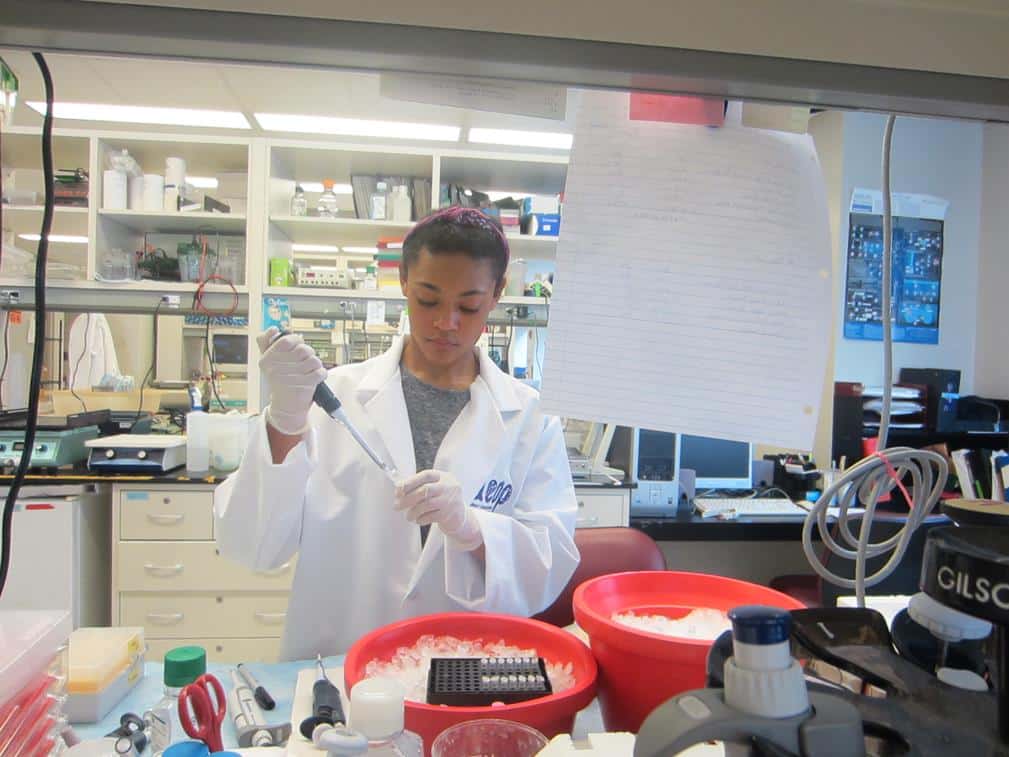Apply for Summer Work Experience in a US Army Research Lab or Center or a Partner University
Are you a high school student who dreams of spending a summer in a research lab? The Army Educational Outreach Program (AEOP) High School Internship program offers high school students an exciting opportunity to work one-on-one with a university researcher or Department of Defense (DoD) scientist mentor during the summer in science and engineering research internships.
In this article, I’ll give you an overview of the program and highlight key information about what to expect and how to apply. Applications are on a rolling admissions basis, with more locations added throughout the year at U.S. Army labs and partner universities. By applying, you can be part of groundbreaking STEM research that gives you unique, paid experiences and opportunities in the fields you’re most passionate about, in addition to working alongside professional scientists and engineers at labs across the country.

About the Army Educational Outreach Program (AEOP)
The U.S. Army has developed the AEOP to support the vision of a nation of STEM-inspired change makers, problem solvers, and innovators prepared to solve the country’s biggest challenges. AEOP aims to attract, develop, and mentor the next generation of our nation’s diverse talent.
What is the AEOP High School Internship Program?
AEOP High School Internships is a nationwide initiative that provides talented high school students with hands-on STEM research opportunities in world-class facilities at U.S. Army Research Laboratories and Centers and partner universities under the mentorship of professional scientists and engineers. While a few labs host AEOP High School Internships during the academic year, most high school interns participate during the summer. Not only is participation in the AEOP free of charge, but all interns also receive an educational stipend in recognition of their work.
Where Do Students Work?
AEOP High School Interns work in Army Research Laboratories and Centers or collaborating university laboratories. The locations are determined annually based on funding availability and the interest of the scientists and engineers who serve as the program’s mentors. More than 100 participating sites are at US Army labs and partner universities. Last year, about 240 high school interns worked at paid positions through the programs. View the current list of participating locations. The list has a short overview of each internship, including areas of interest (aka subject matter), a description of the type of work, and eligibility requirements. (Note: Additional locations may be added as funding becomes available—keep an eye on social media and the website for notifications.)
“There really is no better way to prepare yourself for a future in STEM than through actual scientific research. I plan on continuing my pursuit of STEM in college, so being introduced to the research process in high school has given me a push in the right direction.”
– Muhammed Khan is a high school student who worked with a team at Miami University experimenting with the development of quantum memory in atomic vapor.
How Many Weeks Does an Internship Run?
The average summer AEOP High School Internship will run for a total of 250 to 300 hours over the course of 6 to 8 weeks, with the exact schedule determined on a site-by-site basis by the local mentor.
What Types of Research Do Students Get to Do?
AEOP High School Interns engage in research related to their mentor and host lab’s area of interest and specialty. There are opportunities in all areas of STEM, including neuroscience, electrical engineering, chemistry, biology, materials science, physics, civil and environmental engineering, and computer science, to name a few.
How Does the Mentorship Process Work?
Interns are selected by their mentors during the application review process. Interns will meet regularly with their official mentor throughout their internship, and will also receive mentorship from other people in the laboratory (undergraduates, graduate students, other research staff, and even their peers). A mentor will teach and support a student’s technical and research skills development. They will also look to have conversations with the intern about their education pathway and career opportunities.
Additionally, interns will have access to webinars and virtual workshops facilitated centrally by the Rochester Institute of Technology (RIT), the administrator of the program. These provide opportunities to hear from engaging speakers in the Army and DoD community who will speak about hot STEM careers and their own career path. RIT facilitates many college readiness workshops on topics like personal branding, scholarships and financial aid, the Common Application, and even the opportunity to meet with an admissions counselor. Their most popular workshops encourage interns to ask questions of a panel of Near Peer Mentors—current undergrad students from colleges throughout the country with backgrounds similar to the interns. The interns find great value in asking their near peers for advice and reflecting on their own pathways in STEM.
“It really gets you ready for the real world,” said Julia O’Gorman, a second-year mechanical engineering student at RIT. “Those summer experiences get you hands-on training for your job with both physical work and other skills, like how to interact with others.” O’Gorman did a virtual summer internship in high school during Covid, when she participated in an online STEM career development program and received training in the day-to-day work of a scientist, such as writing lab reports. Subsequently, she became a peer mentor in the AEOP program, and most recently received a SMART scholarship. Sponsored by the Department of Defense, SMART scholarship recipients commit to working for the DoD as a civilian for one year for every year they receive scholarship support.
Students can also take advantage of AEOP’s growing portfolio of online resources that aims to provide a pathway to a sense of belonging to participants along their journeys in STEM. The goal of the learning management system (LMS) and the other webinars, workshops, and speaker series is to continue to provide information for participants so they can lead a successful journey through the program and beyond.
Tips for Applying
If you’re interested, it is highly recommended that you read through the application support materials and, if possible, attend a virtual info session. Applications are open and are based on rolling admissions this year. Here are some important steps to take:
- Review the comprehensive FAQ guide that covers the application process, eligibility requirements, and specifics about the overall program.
- Participate in an Information Session.
- Follow AEOP Internships and Fellowships on social media for important updates (Instagram, YouTube, Facebook, and Twitter).
- Send questions to the helpline at [email protected] or 585-475-4529.
- Make sure you qualify for the eligibility requirements before applying for any specific internship location.
There are four key eligibility requirements for high school interns:
- Must be a US citizen or permanent legal resident.
- Must be currently enrolled in high school or within 60 months of having received a high school degree and not have started undergrad. (Note: AEOP also has opportunities for undergrads, grad students, and post-docs!)
- Must be at least 14 years old—although some labs have additional age requirements.
- Some sites require that participants be from underserved or military-connected populations as defined by the AEOP (and must meet two criteria to qualify as underserved). Pay attention to site descriptions to see if this is a requirement.
Note that this is a highly competitive program. You will want to put your best foot forward in the application process. Be sure to write about your STEM experience and interest in your application essay. AEOP recommends that you write your essay before completing the application.
“The AEOP High School Internships are more than summer jobs that look good on a college application—they are transformative. The AEOP provides an opportunity for young people to be part of research that addresses the country’s biggest challenges while learning from experts and building a network of like-minded peers.”
– Donna Burnette, Director of AEOP Internships & Fellowships
Other AEOP Programs
AEOP offers internships for undergrad students, fellowships for graduate and post-graduate students, and the Junior Science and Humanities Symposium (JSHS), where high school students compete for scholarships and recognition by presenting results of their STEM projects to a panel of judges.
About Rochester Institute of Technology
Rochester Institute of Technology (RIT) administers the AEOP Internships as a member of a consortium of universities and non-profits that support the AEOP portfolio. If you’re considering STEM in college and want real-world work experience, RIT is well-regarded for its co-ops and internships programs.
Image Credit: AEOP





